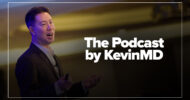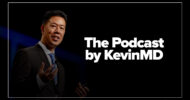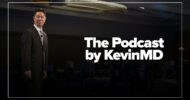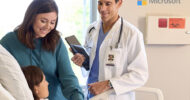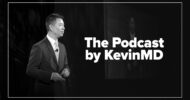This article is sponsored by Stryker Oral Care.
Hospital-acquired pneumonia remains one of the most common—and deadly—infections patients face during hospitalization. Yet, while significant progress has been made in reducing ventilator-associated pneumonia, its lesser-known counterpart, non-ventilator hospital-acquired pneumonia (NVHAP), continues to quietly harm patients, often escaping attention altogether.
Unlike ventilator-associated pneumonia, which occurs in intubated patients, NVHAP develops in non-ventilated, hospitalized patients. Studies suggest it accounts for 65 percent of all hospital-acquired pneumonia cases, yet many hospitals do not track it, and it remains unrecognized by most health care leadership as a preventable harm.
The absence of mandatory reporting has allowed NVHAP to remain hidden. Health care systems primarily focus on outcomes tied to required safety and quality metrics, such as central-line infections or catheter-associated urinary tract infections (CAUTIs). Unfortunately, NVHAP does not yet carry the same weight despite its substantial impact on patient outcomes, hospital length of stay, and overall costs.
To understand the scope of NVHAP, one must first examine its root causes. Pneumonia, whether ventilator-associated or not, often begins in the mouth. Hospitalized patients can develop an unhealthy oral microbiome within just 48 hours, allowing pathogens to thrive. These pathogens are then aspirated into the lungs—sometimes in microscopic amounts—and the body’s weakened immune defenses struggle to fight off infection.
While some populations face greater vulnerability, such as elderly patients, those with cancer, or individuals with comorbidities like heart failure and COPD, the reality is that all hospitalized patients are at risk. The very act of lying in a hospital bed increases susceptibility through immobility, reduced oral care, and compromised defenses.
The effects of NVHAP are staggering. Patients who develop NVHAP can see their hospital stay increase by up to 15 days, putting them at higher risk for other complications, including pressure injuries, falls, and antibiotic-resistant infections. Moreover, NVHAP is one of the leading causes of hospital-acquired sepsis, which carries an alarmingly high mortality rate. Even for those who survive, recovery is often grueling. A significant portion of patients require transfer to higher levels of care upon discharge, leaving families to cope with unexpected financial, physical, and emotional burdens.
Despite its profound impact, NVHAP prevention is surprisingly simple—and effective. Most prevention strategies require no physician orders and can be incorporated into nursing standards of care. Oral hygiene, for example, remains a cornerstone of NVHAP prevention. Good oral care helps to address the presence of harmful bacteria, helping to minimize the risk of that bacteria being aspirated into the lungs. Other straightforward measures include elevating the head of the bed, encouraging patient mobility, and performing bedside swallow screens for at-risk individuals.
However, challenges remain. Prevention programs rely heavily on frontline nursing staff and nursing assistants, who already shoulder enormous workloads. Without proper education, leadership support, and compliance monitoring, even simple preventive strategies can fall by the wayside. Oral care, for instance, is still viewed by many as a comfort measure rather than a critical intervention. Patients themselves often refuse it, unaware of the risks associated with poor oral hygiene during hospitalization.
To successfully address NVHAP, hospitals must embrace a cultural shift that prioritizes its prevention as much as other hospital-acquired conditions. This begins with leadership. Hospital executives must recognize NVHAP for what it is: a preventable harm occurring under their watch. NVHAP may not yet be a required reportable metric, but its connection to mortality, sepsis, and prolonged length of stay makes it impossible to ignore. For hospital systems focused on operational efficiency, the financial burden is also undeniable. NVHAP costs hospitals an estimated $28,000 to $40,000 per patient—expenses that could be avoided with preventive care.
Health care professionals, too, must play a central role in tackling NVHAP. Nurses, nursing assistants, and infection control teams are well-positioned to champion prevention protocols, provided they are given the tools and education to succeed. Compliance must be more than a checked box on a chart. Real-time monitoring, bedside checks, and patient engagement are key to ensuring preventive strategies are implemented consistently and effectively.
Patients and their families also deserve education. Many do not understand oral care’s role in addressing the risk factors of pneumonia. When patients refuse oral hygiene or resist getting out of bed, it often stems from a lack of awareness. By including them in the conversation and empowering them to participate in their care, hospitals can turn patients into active partners in prevention.
Data collection and tracking remain critical. Hospitals that have implemented NVHAP prevention programs often begin with retrospective chart reviews or ICD-10 code analysis to measure baseline rates. More recently, electronic methods for NVHAP surveillance have been developed, allowing hospitals to identify cases in real time. Combining outcome metrics—like incidence rates of NVHAP and associated sepsis—with process metrics, such as oral care frequency and patient mobility, allows hospitals to measure the success of their programs and make necessary improvements.
The good news is that NVHAP prevention efforts work. Hospitals that have implemented oral care protocols alongside other preventive measures have reported significant reductions in NVHAP cases. The results extend beyond patient safety: fewer infections mean shorter hospital stays, lower readmission rates, and cost savings that benefit both patients and health care systems.
Addressing NVHAP requires a unified effort. Health care leadership must take the lead by acknowledging NVHAP as a serious threat and providing the resources needed to combat it. Frontline staff must see NVHAP prevention not as an added task, but as a critical part of patient care. Patients and families must be engaged and educated to play their part.
NVHAP may not yet have the spotlight, but its prevention is both achievable and necessary. By elevating its importance, hospitals can reduce harm, improve outcomes, and ensure safer stays for every patient. The solutions are within reach—it’s time to act.
For complete instructions for use, warnings, and safety information, visit https://www.stryker.com or call 800-323-2000.
The presenter may have or have had a financial or advisory relationship with Stryker.
The opinions of the host are those of the host and may not necessarily be those of Stryker.
VISIT SPONSOR → https://KevinMD.com/Stryker
SUBSCRIBE TO THE PODCAST → https://kevinmd.com/podcast








